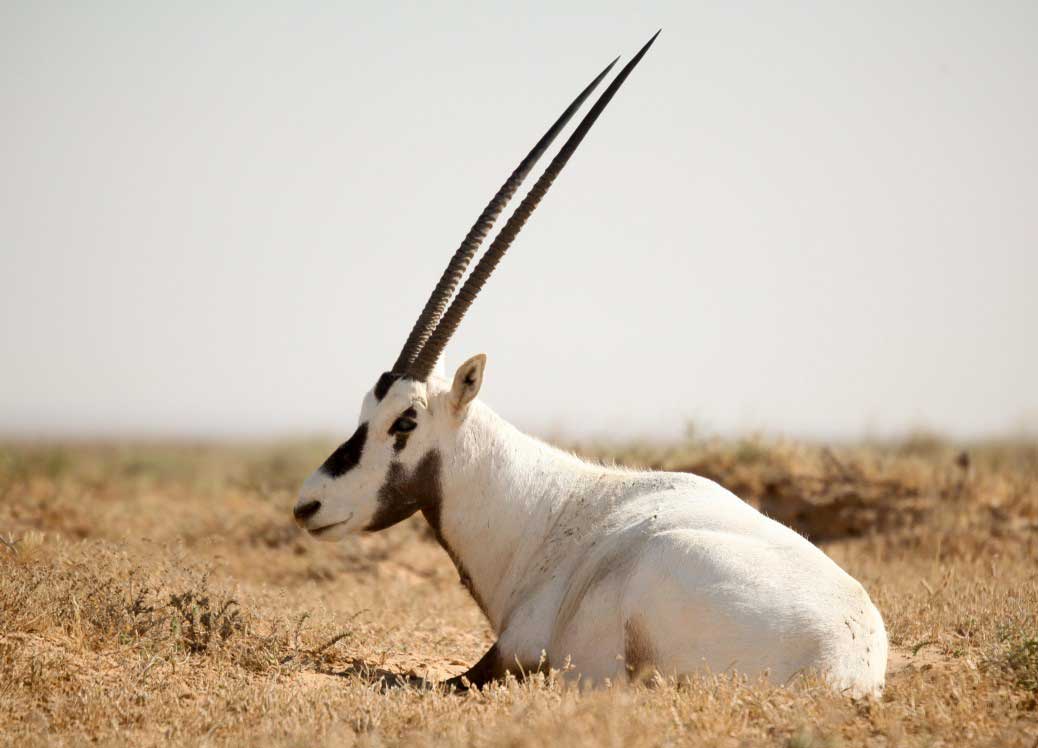
Syria
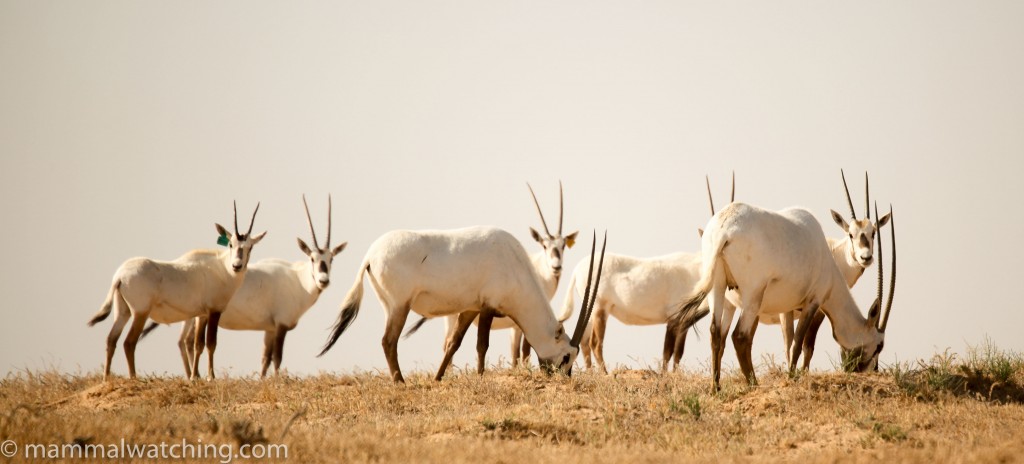
Arabian Oryxes, Oryx leucoryx, Al Talila Reserve
I spent 12 hours in Syria – a day trip to Damascus from Jordan in 1994 – and didn’t see any mammals. I returned to Damascus for work in May 2010 and took the opportunity – after reading Remco Hofland’s report below – to visit Al Talila Reserve for a night.
Al Talila is 3 hours and $4 on the bus from Syria, near the town of Palmyra. Before I went I contacted the very helpful May Abido from Eco Tourism Syria. She was out of the country but was extremely helpful in answering my questions and paving the way for me to visit the reserve. She is also very knowledgeable about Syria’s mammals and also sent me a very nice paper on the bats of Syria.
On the advice of May I contacted the National Park office in Palmyra and spoke to colleagues of Mr Ali Hamoud the director of the Badia Centre (telephone 031 591 5000) in Palmyra. He in turn was very helpful when he understood my specific interest in mammals and was kind enough to arrange for some of his staff to meet me in Palmyra and show me the reserve. He also gave me permission to visit the area at night though was not able to provide a guide for that.
I got to Palmyra after 9pm and it was easy to find a hotel and arrange for a taxi to take me spotlighting around the reserve. We spent a couple of hours in the reserve plus a little time persuading the people there to let us in. Arabian (formerly Lesser) Jerboas were abundant – we saw dozens on the road into the park and many more inside.
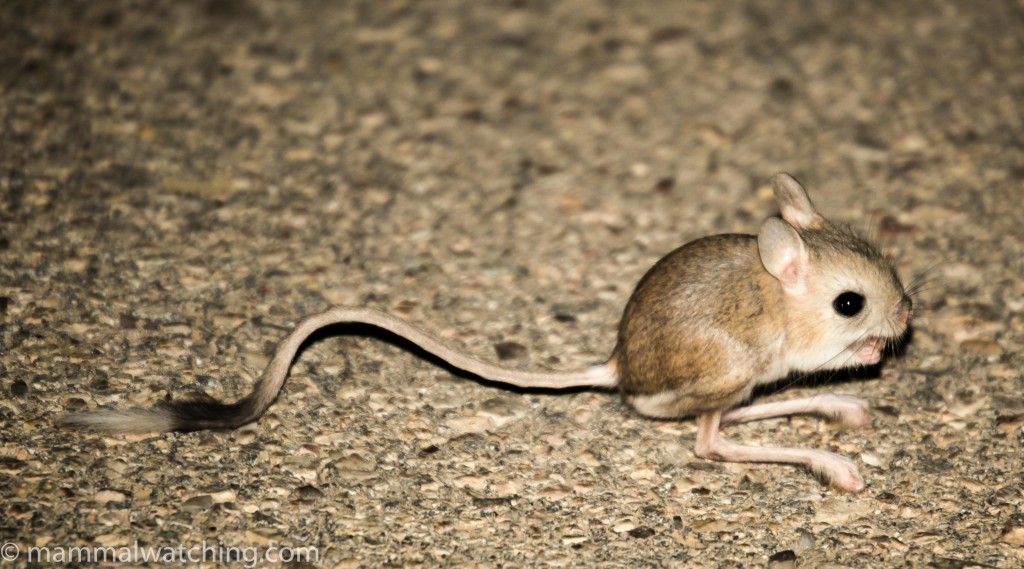
Arabian jerboa, Jaculus lofutsi
The only other mammal we saw was a fox near the park HQ – A Rueppell’s Fox I think though it could have been the desert form of Red Fox. Both occur within the park.
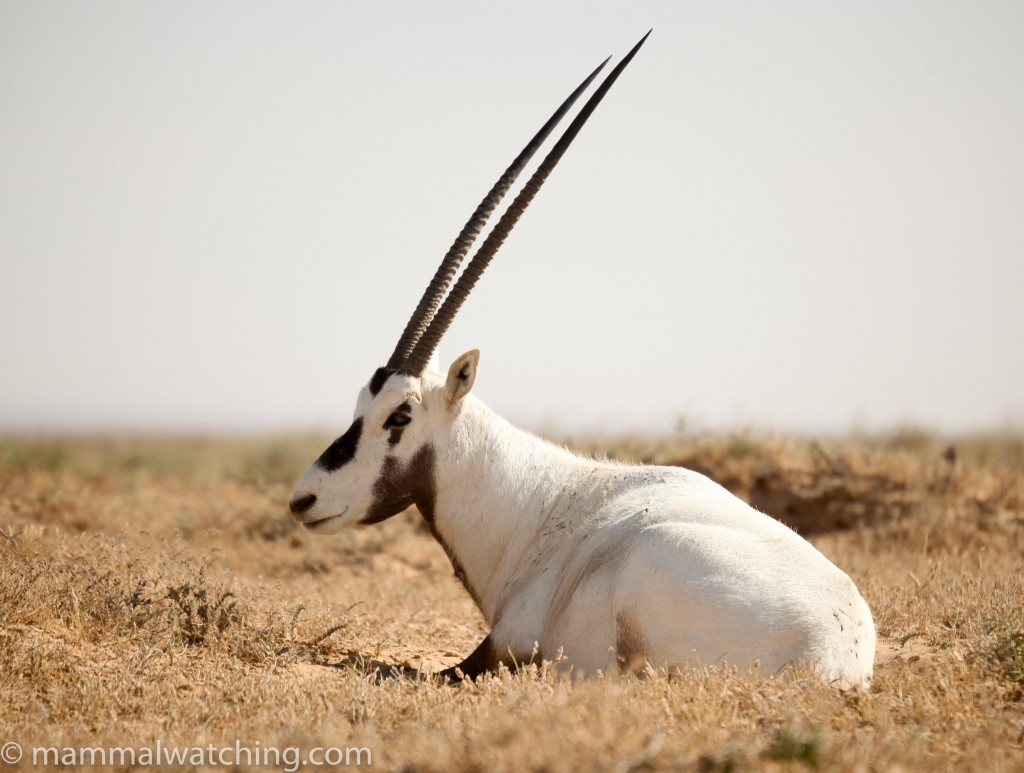
Arabian Oryx, Oryx leucoryx
The next morning I was met in Palmyra by Ahmed Abdullah from the Badia Centre for an early morning visit, courtesy of the park authorities. The park is trying hard to protect Syria’s biodiversity which has taken a hammering in the last 50 years and it covers some 220 square kilometers of range/steppe land and is also home to an important herd of captive Oryx and Goitered Gazelle. The first Goitred Gazelles had been reintroduced to the Syrian wild a few days before my visit, and plans were underway to release Oryx.
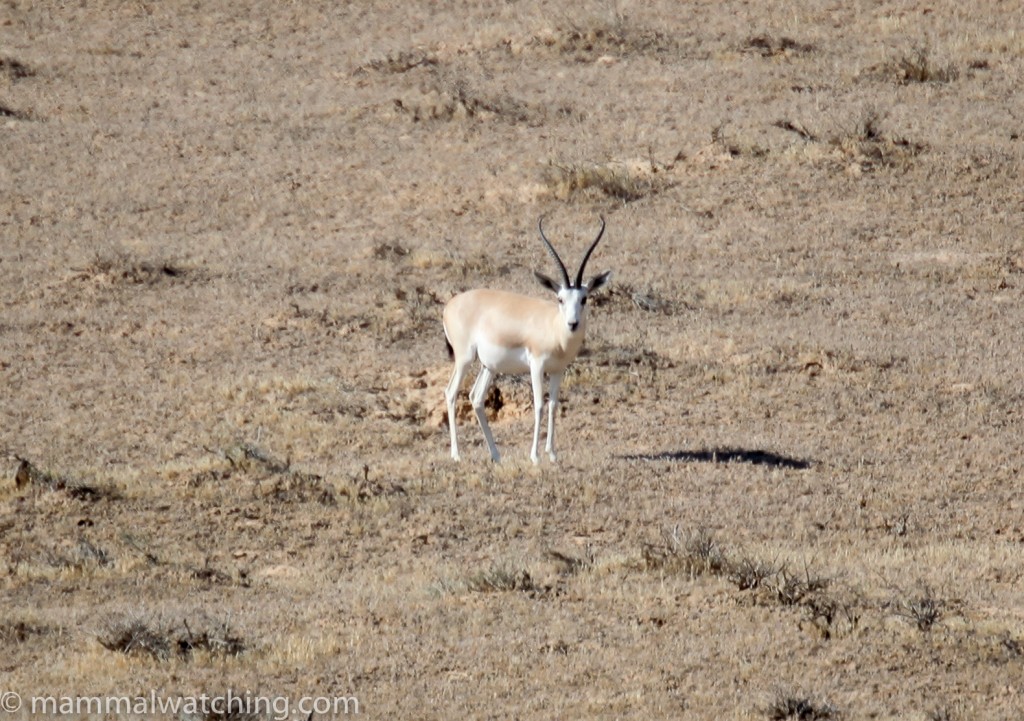
Goitered Gazelle, Gazella subgutturosa
Ahmed was knowledgeable about the park’s mammals and had been one of the group who had seen a Sand Cat in 2007 with Remco Hofland (see his trip report below). I have only seen a Sand Cat once and not particularly well so I was can to see this species again. Unfortunately this was the last Sand Cat Ahmed had seen and the den they had discovered was no longer active.
We spent a little time looking for Libyan Jirds which are common in the park (numbers fluctuate but this year was a good Jird year). Ahmed spotted some soil flying out of a Jird hole but that was as close as we got.
Other mammals occurring in the park include Wild Cats, Jackals, Euphrates Jerboas, Mole Rats, Porcupines, and occasional Wolves and Hyenas.
The visitor’s centre is also nice and well worth a visit.
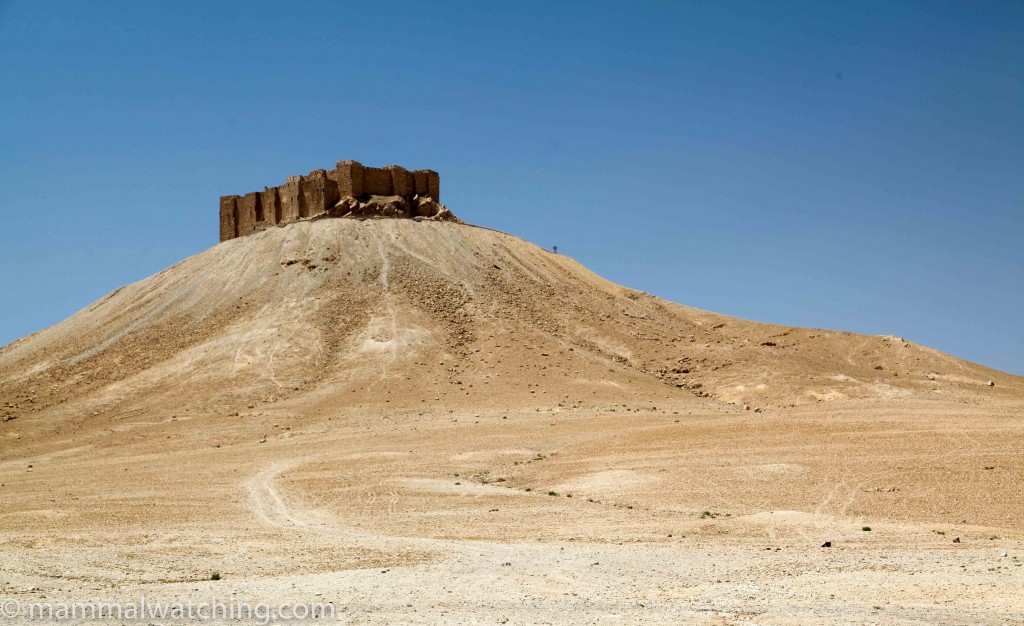
Kaalat Fakhr Addin Almaani Castle
According to the paper from May Abido on the bats of Syria, Bottae’s Serotine was one of several species recorded in Palmyra at the Kaalat Fakhr Addin Almaani Castle. I spent 45 minutes here investigating crevices and holes in the masonry but couldn’t find any evidence of bats.
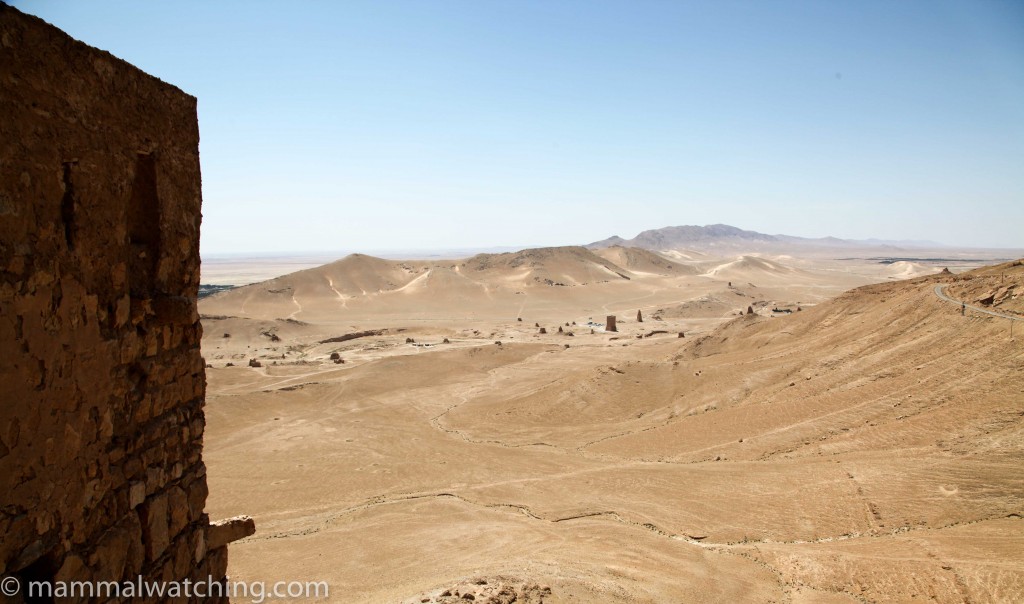
View from the castle
Community Reports
Syria, Iraq and Bahrain, 2021: Vladimir Dinets’s report of a few days and many mammals including Golden Hamster and Long-tailed Bandicoot Rat.
Syria 2007: Report of a Sociable Lapwing Survey: Remco Hofland, 2 weeks and 9 mammals including a Sand Cat.
Also See
Please email me if you have tips for mammal watching in this area.
Resources
This is a nice paper on the bat of Syria and sites to see them.


Leave a Reply
You must be logged in to post a comment.